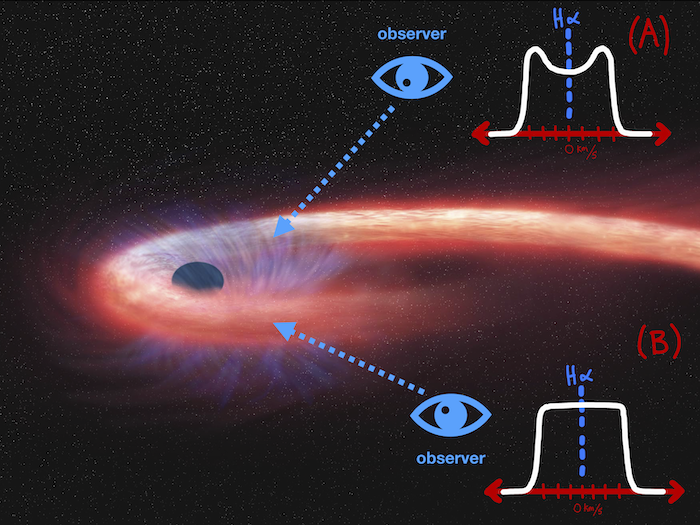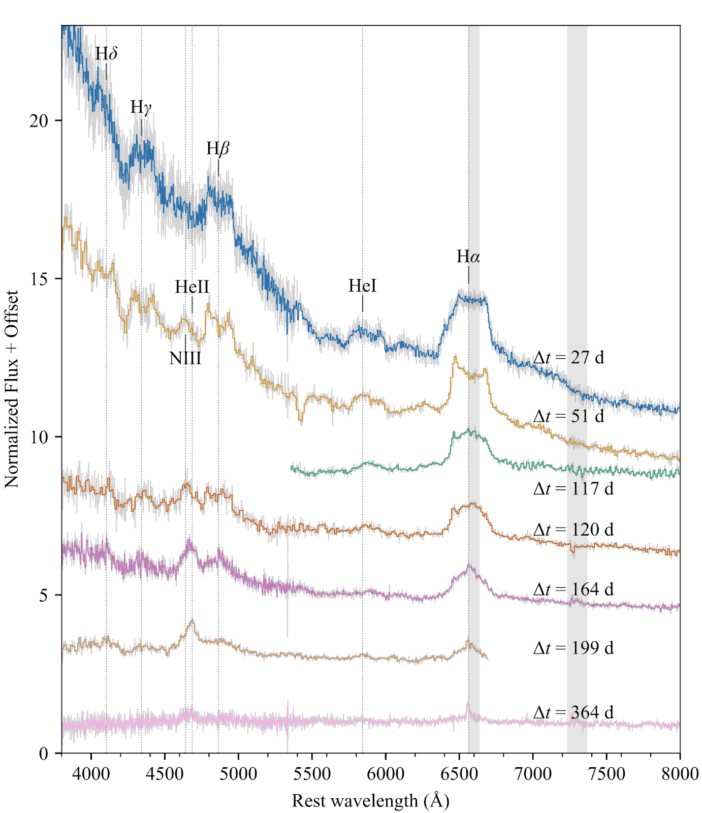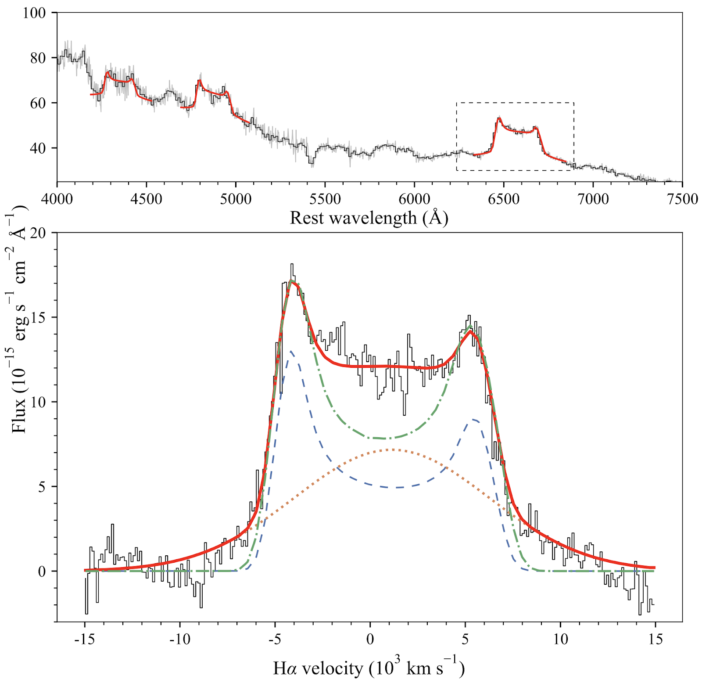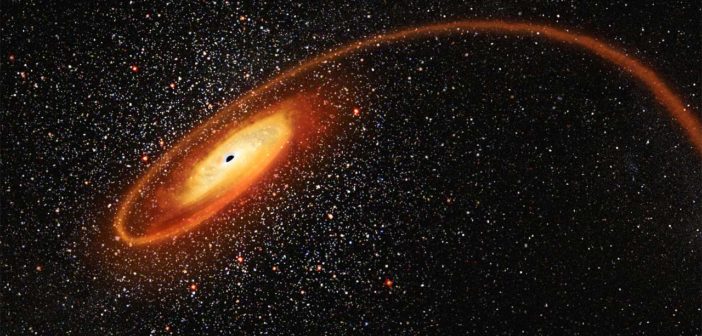Editor’s note: Astrobites is a graduate-student-run organization that digests astrophysical literature for undergraduate students. As part of the partnership between the AAS and astrobites, we occasionally repost astrobites content here at AAS Nova. We hope you enjoy this post from astrobites; the original can be viewed at astrobites.org.
Title: Prompt Accretion Disk Formation in an X-Ray Faint Tidal Disruption Event
Authors: Tiara Hung et al.
First Author’s Institution: University of California, Santa Cruz
Status: Submitted to ApJ
To Catch an Accretion Disk
The universe reveals a variety of ways in which stars can die. We observe stars imploding, erupting, and merging, yet the tidal disruption event (TDE) is one of the most tumultuous spectacles of stellar destruction we have discovered so far. This transient phenomenon begins with a star orbiting near a supermassive black hole (SMBH) in the galaxy center. Oblivious to its impending doom, the star’s trajectory pushes it too close to the SMBH’s sphere of gravitational influence and tidal forces begin to shred the stellar structure. The woeful star is now a fly in a supermassive spider’s web: the star will be ripped apart, spaghettified stellar gas coming to form an accretion disk. This then results in a violent eruption of radiation as bits of star fall into the central black hole (Figure 1).

Figure 1: Artist’s interpretation of a tidal disruption event (TDE). Here a star is shredded by a supermassive black hole, forming an accretion disk that then emits bright optical radiation. The type of hydrogen emission from a TDE is dependent on whether we observe accretion disk (A) face-on or (B) edge-on. [Adapted from NASA/CXC/M. Weiss]
Theoretical Predictions Confirmed
In an exciting leap for the study of TDEs, the authors of today’s paper present the first confident detection of a newly formed accretion disk around a SMBH. The discovered explosion is a TDE called Astronomical Transient (AT) 2018hyz, which was observed spectroscopically by the team for over 300 days after the explosion was detected. In Figure 2 we see that by Day 51 the SMBH’s stellar consumption has revealed itself in the form of “horned” hydrogen emission line profiles.

Figure 2: Spectroscopic observations of TDE 2018hyz for over 300 days after the explosion was detected. By Day 51, we can see the infamous double-peaked line profiles emerge in H-alpha (marked in grey). These are directly linked with an SMBH accreting material from a disrupted star. [Hung et al. 2020]

Figure 3: Combined, multi-component model of the TDE shown in red. The dashed blue/green lines arise from the accretion disk while the dotted orange line is from the outward ejection of material after the star is ripped apart. [Hung et al. 2020]
It should be noted that other teams have published journal articles on this same TDE, e.g., Short et al. 2020 and Gomez et al. 2020.
About the author, Wynn Jacobson-Galan:
Hi there! My name is Wynn (he, him, his) and I am an NSF Graduate Research Fellow at Northwestern University where I work with Prof. Raffaella Margutti on supernova progenitor systems and transient astronomy. I am fascinated by the final moments of stellar evolution before a star dies and becomes the violent supernova explosions we observe across the universe everyday. Consequently, as a researcher, I am both a stellar physician and a mortician: I use observational astronomy to wind back the cosmic clock in order to understand how certain stars were “living” right before their explosive “death.” Outside of research, I enjoy reading (specifically 20th century literature) and skateboarding. Also, if I’m not playing music (trumpet & saxophone), I am usually trying to find fun live music in Chicago.

2 Comments
Pingback: Double-Peak and Destroy: Accretion in a Tidal Disruption Event Reveals Itself – Earl's Astro Site
Pingback: Zaobserwowano nowo powstały dysk akrecyjny wokół supermasywnej czarnej dziury – PTMA Kraków